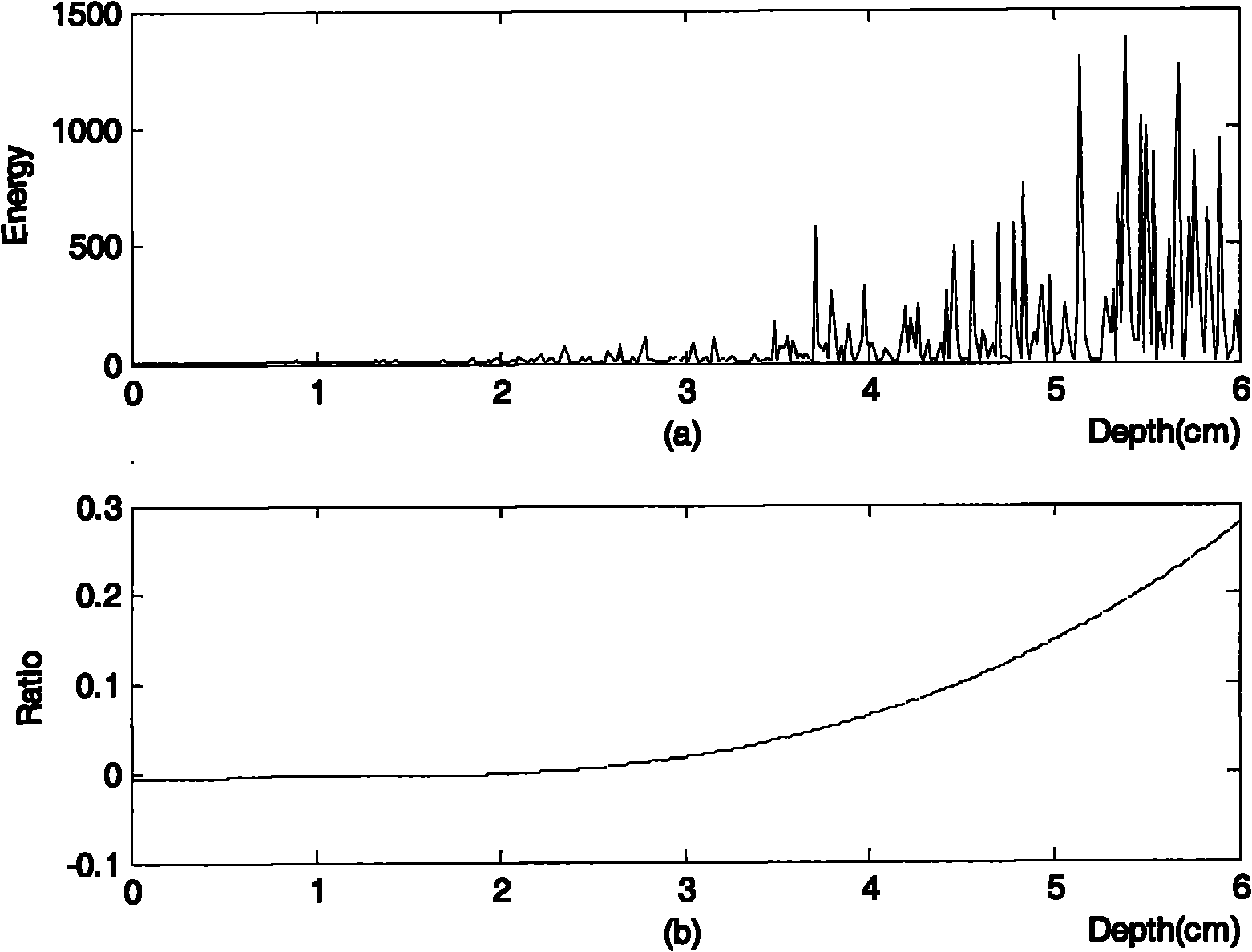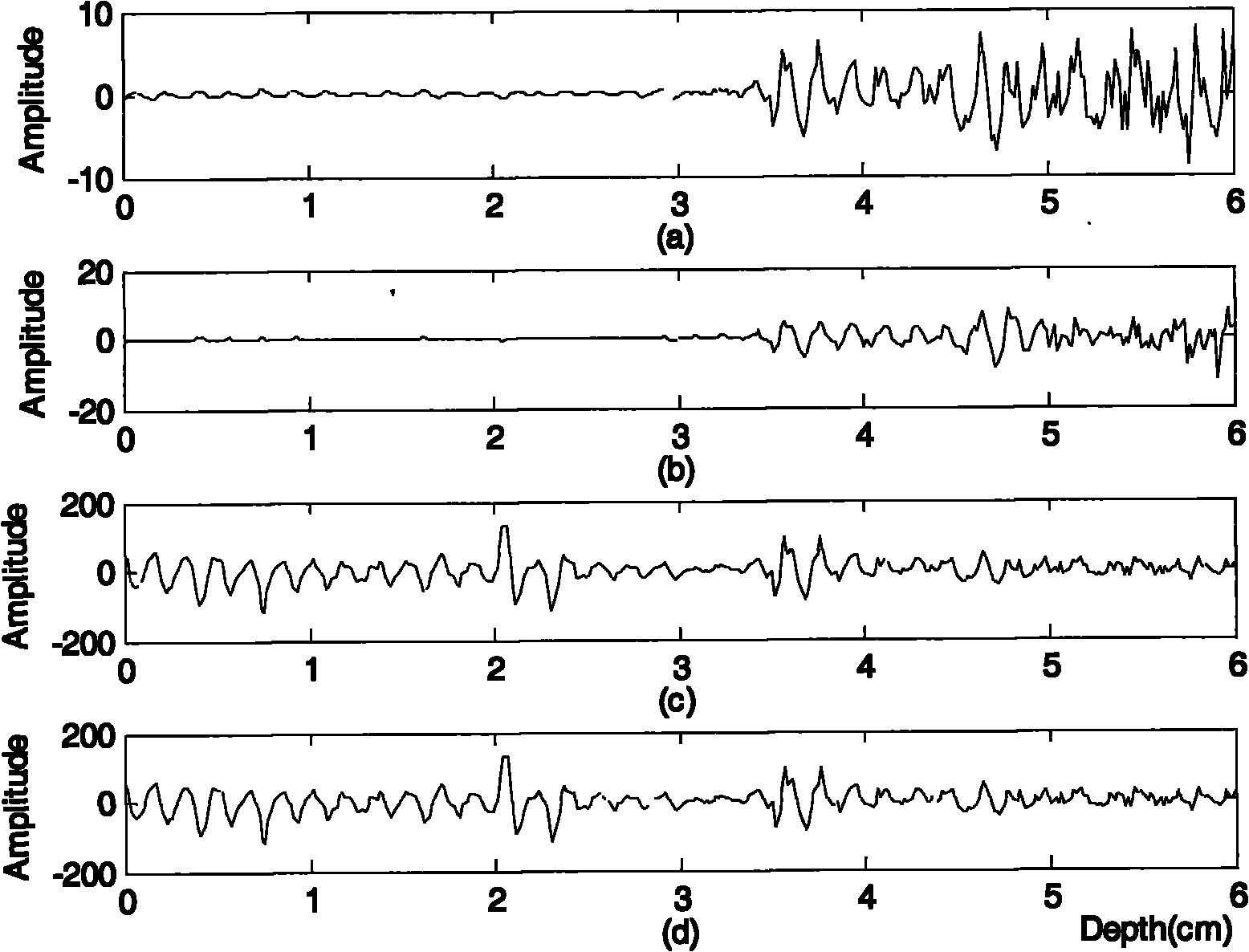Ultrasound signal de-noising method based on correlation analysis and empirical mode decomposition
A technology of empirical mode decomposition and correlation analysis, which is applied in ultrasonic/acoustic/infrasonic diagnosis, acoustic diagnosis, infrasonic diagnosis, etc., can solve problems such as poor adaptive ability, non-stationary, and limited nonlinear signal processing ability, and achieve The effect of broad application prospects
- Summary
- Abstract
- Description
- Claims
- Application Information
AI Technical Summary
Problems solved by technology
Method used
Image
Examples
Embodiment Construction
[0032] In order to better understand the technical solutions of the present invention, the specific implementation manners of the present invention will be further described in detail below in conjunction with the accompanying drawings.
[0033] The first step is to obtain the trend curve of noise changing with TGC gain.
[0034] In the empty acquisition state of the ultrasound imaging system, pure noise signals can be acquired. According to the characteristics of the TGC curve, the mathematical model of the noise signal is nonlinear.figure 1 In (a), the energy curve of the pure noise signal is given, and the mathematical model Alpha curve of the noise signal is fitted by the nonlinear least square method, as shown in figure 1 (b) shown.
[0035] In the second step, the normally acquired ultrasonic echo signals of two consecutive frames are divided into two parts.
[0036] Collect two consecutive frames of ultrasonic echo signals Signal1 and Signal2 at the same position. Acc...
PUM
 Login to View More
Login to View More Abstract
Description
Claims
Application Information
 Login to View More
Login to View More - R&D
- Intellectual Property
- Life Sciences
- Materials
- Tech Scout
- Unparalleled Data Quality
- Higher Quality Content
- 60% Fewer Hallucinations
Browse by: Latest US Patents, China's latest patents, Technical Efficacy Thesaurus, Application Domain, Technology Topic, Popular Technical Reports.
© 2025 PatSnap. All rights reserved.Legal|Privacy policy|Modern Slavery Act Transparency Statement|Sitemap|About US| Contact US: help@patsnap.com



